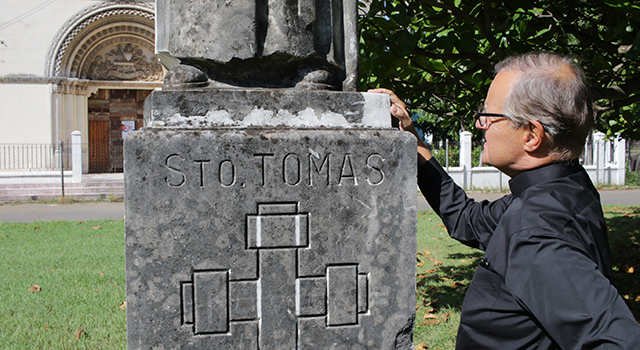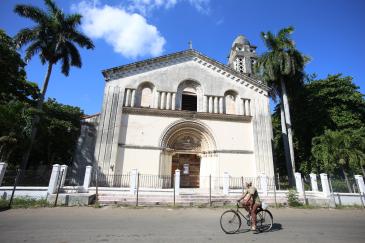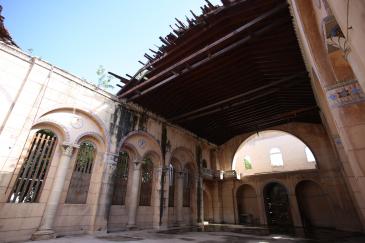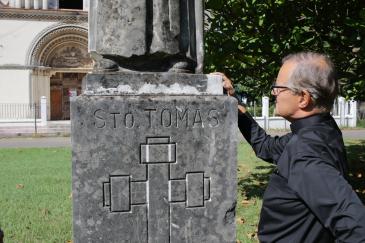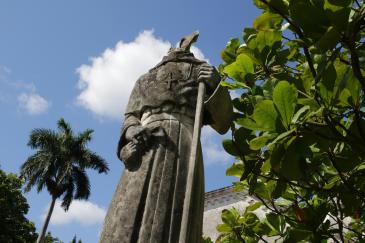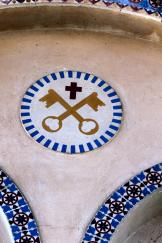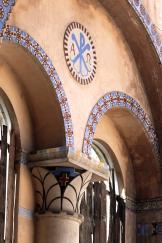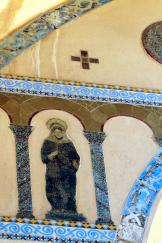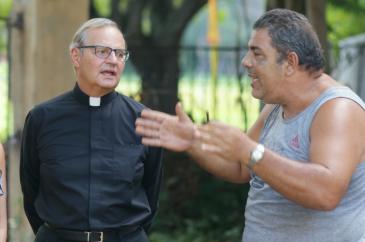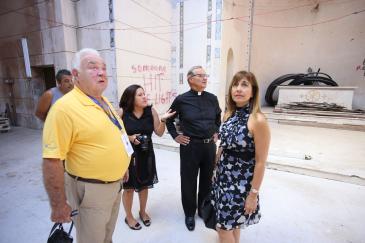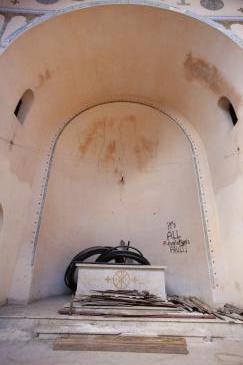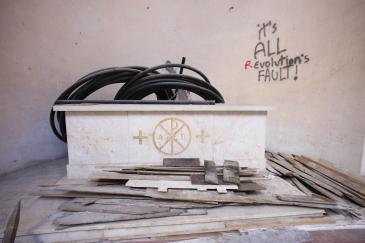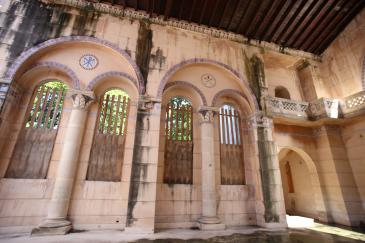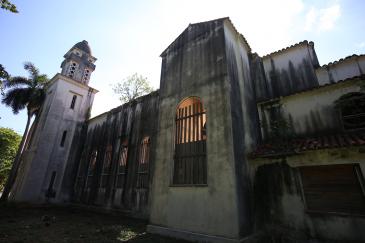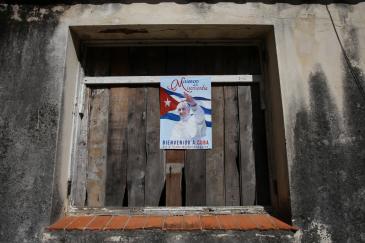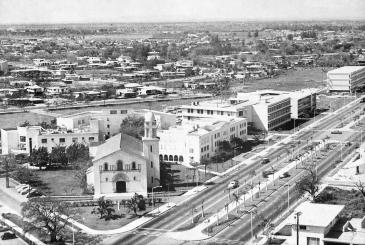By Tom Tracy - Florida Catholic
Photography: TOM TRACY | FC
HAVANA | In some ways it’s hard to believe that half a century passed since students walked the grounds of Santo Tomas de Villanueva campus here or since a Mass was celebrated in the student chapel.
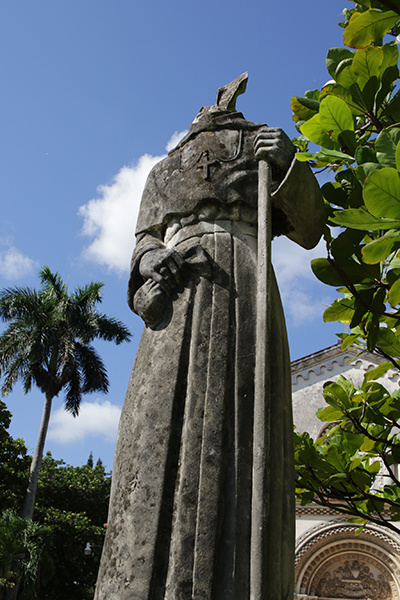
Photographer: TOM TRACY | FC
The damaged statue of St. Thomas Villanova at the old Santo Tomas de Villanueva University in Havana shows that the statue is lacking a head. The chapel and university have not been in ecclesial use since it was seized by Cuban authorities following the Bay of Pigs U.S. military operation in 1961.
Situated in Havana’s leafy Marianao district, the majestic outside of the chapel looks reasonably intact, classical and dignified. A poster here or there on the outer doors announces the historic 2015 visit of Pope Francis to Cuba.
But then there is the matter of Santo Tomas chapel’s wooden roof: it is mostly gone, long since collapsed due to neglect and weather damages in the decades since the Cuban revolution drove out the Church and repurposed the campus as a vocational training facility.
Over the years, the chapel was reportedly used by the Castro regime for storage, and, like a sad, old barn along a country road, it still houses some loose timbers piled here and there. Mostly it is empty, faded, water stained.
The pews and other chapel furnishings are apparently in storage somewhere, and splotches of graffiti blight the inside walls.
Only the old altar � its position an indication of a pre-Second Vatican Council layout � and depiction of saints and other religious artwork high up over the arches confirms that this was once a church.
Outside on the spacious front lawn, Msgr. Franklyn Casale, president of Miami’s St. Thomas University � now a Miami archdiocesan institution born out of Santo Tomas’ abrupt relocation to Florida following the Cuban revolution � inspects the remnants of a statue of Santo Tomas de Villanueva.
The statue is headless, and Msgr. Casale is listening to a local Cuban man explain the statue’s fate and what may have happened to its head. Speaking in Spanish, the man says it may have been broken off by mischievous local youth hurling bricks or rocks; or, more likely it seems, it was shot off in the aftermath of the revolution, a signal that religion was no longer welcomed here.
Msgr. Casale was accompanied on his visit by two members of his staff and an alumnus from Miami who studied at the old campus here.
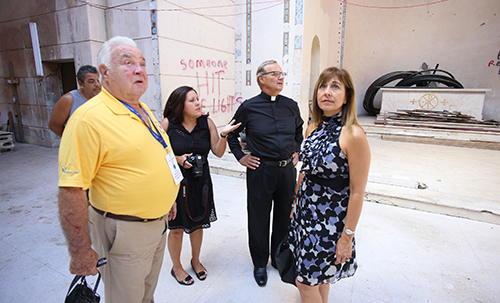
Photographer: TOM TRACY | FC
St. Thomas University staff tour the damaged chapel at the former Santo Tomas de Villanueva University, founded in 1946 in Havana. From left: alumnus Rene Leonard, Vice-President for Advancement Hilda Fernandez, President Msgr. Franklyn Casale and Provost Irma Becerra-Fernandez.
Several years ago the Cuban government returned ownership of the chapel � but not the campus � to the local Church, and the archdiocesan-sponsored papal pilgrimage to Havana provided the Miami group with a first-ever look inside the property.
They studied the chapel structure, which they hope the Havana Archdiocese can one day restore to a working church. They also took photos of the statue, and discussed the possibility of supporting a statue restoration project as a gesture of goodwill and a visible means of connecting the Miami campus to its Havana roots at a time when St. Thomas is getting ready to celebrate its 70th anniversary in 2016.
The original Universidad de Santo Tomas de Villanueva was founded in 1946 in Havana by American-based Augustinians with assistance from European Augustinians. When the Castro government expelled the Augustinians from Cuba in 1961, several of the American Augustinians came to Miami and founded Biscayne College.
The university came under the sponsorship of the Archdiocese of Miami in 1988, conferring upon St. Thomas the distinction of being the only Catholic archdiocesan-sponsored university in the southeastern U.S.
When university status was attained, the name of the institution was changed to St. Thomas University to reflect its Cuban heritage.
Msgr. Casale, who concelebrated the papal Mass in Havana Sept. 20, and who has traveled to Cuba for the previous papal visit and other occasions, said he has visited the old campus three other times. But until this visit he had been unable to look inside the chapel, which is situated behind a locked fence.
The 2015 papal pilgrimage to Cuba is unique, the priest said, for several reasons.
“The new (U.S. diplomatic) opening to Cuba, and with the pope going and being responsible for part of that, is significant,” Msgr. Casale said. “For me to go to Cuba and to visit the original site of our university, with our roots there, and add to that the visit of the pope, this is all kind of emotional.”
Irma Becerra-Fernandez, who was appointed provost at St. Thomas University last year, was also on the trip. She talked about the possibility of more university engagement with Cuba academically, especially if Cuba takes greater steps to privatize or loosen its economy and encourage local business entrepreneurship.
“We are looking to start some collaborations with the Catholic Church in Cuba,” she said. “There is a lot of interest in entrepreneurship for small business, and there are other educational needs, so we will see how we can collaborate with the Church in Cuba to support them in their needs. There are a number of conversations going on with the bishops."
She added that “St. Thomas University was founded in collaboration with Cuban families who gave the funding to start the university and it was the only Catholic university on the island. We will help in any way we can. It is our mission. It is our duty."
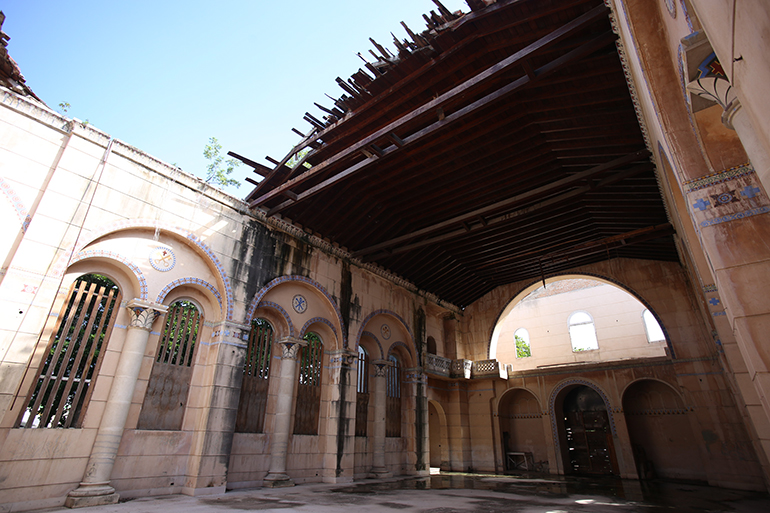
Photographer: TOM TRACY | FC
The roofless chapel property at the former Santo Tomas de Villanueva University in Havana was returned to local church custody in 2009, but has not been in use since just after the Bay of Pigs military operation in 1961.
Corrected Oct. 15, 2015: The original campus of St. Thomas University in Havana is actually located in the Marianao, not Miramar, section of the city.
